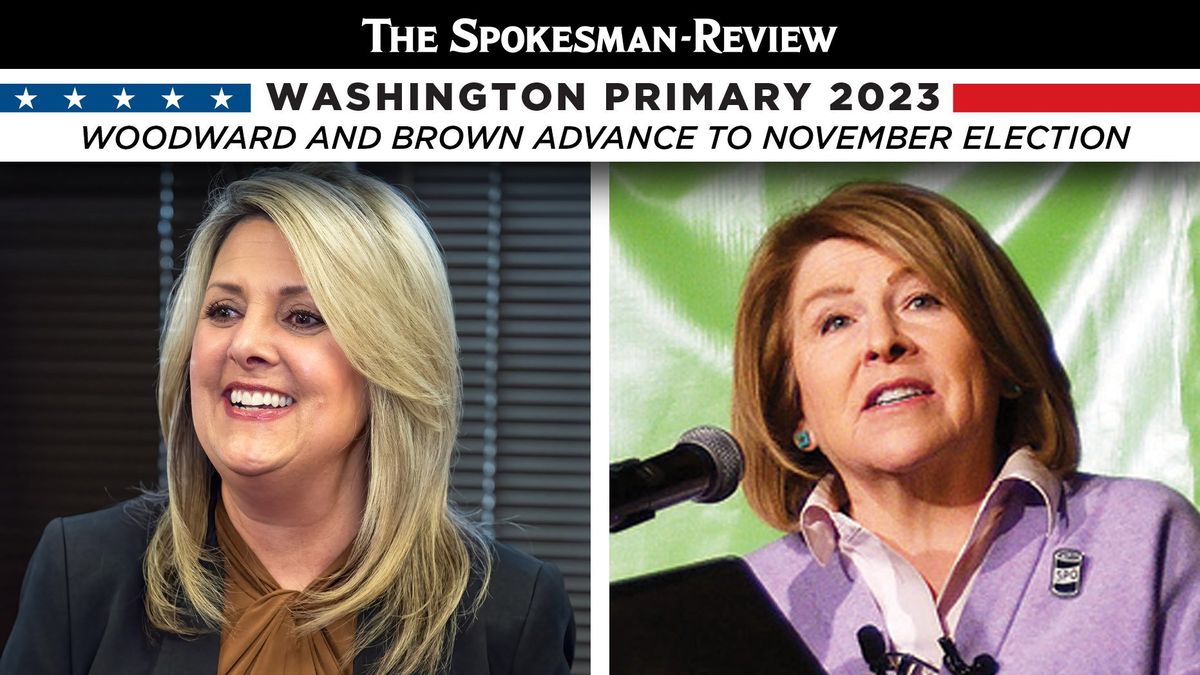This column reflects the opinion of the writer. Learn about the differences between a news story and an opinion column.
Spin Control: Spokane mayor’s race is hard to predict based on primary data, but one can try

Primary results are interesting, but predicting the general election outcome from them is among the riskiest things a political writer can do.
So other than saying Spokane is in for the first mayoral election with two women candidates since 1985, it’s best not to be definitive about the upcoming race between incumbent Nadine Woodward and former state Sen. Lisa Brown. It’s three months until the general election, and any candidate can tell you that in politics, three months can be an eternity.
As reported in the days after the primary, neither candidate captured a majority of the votes, but Brown has a significant lead over Woodward. Speculating on where the voters who supported the other three candidates will gravitate in the general is probably a waste of time.
Firefighter Tim Archer, who finished third, said he’s not endorsing either finalist, adding they’ll have to earn his supporters’ votes. That’s usually what happens anyway, endorsement or not.
But there are some interesting data tidbits in the primary results, which are well in hand even if they won’t be final until the straggler ballots are counted later this month.
Chief among them is that Northeast Spokane, which is the city’s Council District 1, significantly lagged in turnout compared to South Spokane’s District 2 and Northwest Spokane’s District 3.
Slightly more than one registered District 1 voter in four, or 26.5%, cast a primary ballot, while 42% of District 2 voters and 37% of District 3 voters turned in a ballot.
The lack of a council primary probably didn’t help, but the contested races in the other two districts didn’t seem to be much of a draw.
Only about 100 voters citywide failed to mark their ballot for the mayor’s race, compared to about 800 who didn’t select a candidate in the three-way District 2 race and nearly 1,000 who left the District 3 race blank despite having six candidates from whom to choose.
Brown got more votes in all three of the council districts with her biggest margins in Council District 2, amassing much of her lead from high turnout precincts on the lower South Hill. Strong showings in the Indian Trail and northwest precincts near Whitworth University gave Woodward her biggest margins.
Northeast Spokane has long been the area with the fewest registered voters and the lightest turnout. Although the council districts are drawn to be roughly equal in population after each census, District 1 has about 40,000 registered voters compared to about 51,500 for District 2 and 53,500 for District 3.
The 3rd Legislative District, which includes Northeast Spokane, is among the state’s poorest and most mobile.
Brown represented the 3rd Legislative District, which had all the precincts in what’s now Council District 1 in the 20 years she was in the House and Senate. One might expect that she would have carried those precincts. Woodward, however, edged her out in Hillyard and about half of the precincts between Francis and Interstate 90.
There are a couple of ways to read the tea leaves from this data.
One is that general election turnout will definitely be higher than the 36% from the primary – possibly as much as double, if the mayor’s race and other contests get hot. That might be better for Brown, who is leading in many precincts that had above-average turnout in the primary and could be expected to remain engaged.
Woodward, on the other hand, did well in some precincts that had low turnout in the primary, but if those voters can get engaged, she has a chance to close the gap.
Looking back at 1985
Anyone looking back to the last time the Spokane mayor’s race was between two women won’t find too many parallels. Both candidates were well-known, although neither was the incumbent. Vicki McNeill was on the council and Margaret Leonard had been both a councilwoman and a legislator.
Both were Republicans, although McNeill was a business conservative from the South Hill. Leonard was a neighborhood populist from the North Side who campaigned around town in her 1967 Buick Electra. It was a low-budget affair, with McNeill raising just over $36,000 by election day and Leonard about $17,000.
Although everything was cheaper back then – just ask any cranky old-timer – that also may be a reflection that the job was different, too. The mayor was a voting member of the city council who ran the meetings. The mayor’s executive duties were mostly ceremonial.